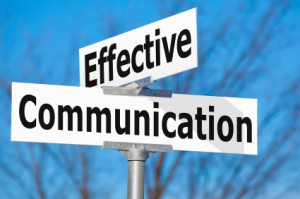Changing Your Strategy? Change Your Culture.
We already know that culture eats strategy for breakfast. If your strategy doesn’t map to your culture, … well, culture always wins. The
first thing you need to do as a leader is to understand exactly what your culture is. What behaviors do your employees value? Who do they look up to? Who do they follow? Leaders who don’t understand the current culture (as can happen when an outsider is brought in) are almost always doomed to failure.
Let’s say that you do understand the culture but you need to change the strategy in ways that will conflict with the culture. Can you do it? Yes, but only if you change the culture first. Fortunately, you can change a culture. It takes time and requires a firm grasp of human nature, but you can do it. The first thing to remember is that you have to lead the way. You can’t just say, “stop doing what you were doing and do something new.” You have to start by behaving the way you want others to behave. If you’re a good leader, your employees will model their behavior on yours. The atmosphere will change. The culture will change.
There are a few other things you need to do as well. You can find them in the video.
Strategy: Preparing for an Uncertain Future
Does the past predict the future? We like to think it does. That’s why we study history. We look for patterns in the past and for connections between events. We then project these into the future. If A caused B in the past, it’s likely that A will again cause B in the  future.
future.
Unfortunately, it’s not quite that easy. First of all, it’s extremely hard to demonstrate cause-and-effect in the past. In fact, the only way to conclusively prove cause-and-affect is the experimental method and (fortunately or unfortunately) history is not an experiment. We may think we discern patterns in the past but we may just be wrong. As Mark Twain said, “In the real world, nothing ever happens when or where it should. It’s up to historians to fix that.”
Second, even if we can show cause-and-effect in the past, there’s no guarantee that it will happen again in the future. Things just aren’t that simple. Attitudes may change. New variables may intervene. Stuff happens. Time and again, we’ve shown that experts can’t predict the future — even in their areas of expertise — any better than throwing darts.
So, should we just give up? Well, no. Even though we can’t predict the future, we can prepare for it. We just have to imagine multiple possibilities. There are multiple ways that the future could play out. All we have to do is imagine them. Fortunately, there’s a structured way to do that. It’s called scenario planning and it’s the subject of the video.
Do You Have the (Emotional) Intelligence to Lead?
Now that I’m older and wiser, I’m going back to re-read some of the classics in the leadership literature to see if I can tease out new meanings. Daniel Goleman’s article, “What Makes A Leader?” in Harvard Business Review (1998) is a case in point. We’ve all heard the term “emotional intelligence” but how many of us really remember what it means? How many of us know how to practice the art?
For many male leaders, I think “emotional intelligence” evokes something feminine. Perhaps it’s similar to “soft power” in diplomacy. It’s not a bad thing but is it really crucial? If my company gets in trouble, would I rather have soft power or a cadre of kick-ass sales people who can close deals and generate revenue?
If you read Hanna Rosin’s new book, The End of Men, you may think of emotional intelligence in a new light. Rosin argues that the new economy — largely services rather than manufacturing — requires skills such as flexibility, empathy, self-control, and persuasion. Rosin argues that women are better at these skills than men and that’s why they’re accelerating past men and taking over entire professions like accountancy, pharmacy, and forensic pathology.
Though Rosin doesn’t use the term “emotional intelligence”, the differentiating skills she describes map very closely to Goleman’s five elements of EI. These are: 1) Self-awareness – knowing one’s strengths and weaknesses, and their impact on others; 2) Self-regulation — controlling disruptive emotions; 3) Motivation — being driven to achieve for the sake of achievement; 4) Empathy — considering other’s feelings; and, 5) Social skill — managing relationships to move people in desired directions.
Goleman says that these skills are essential to good leadership. Rosin says women are better at them than men are. If they’re both correct, we need to re-think at least some of our leadership development curricula. We also have a fair amount of re-training to do — perhaps mainly of male executives. Fortunately, Goleman provides exercises that will help anyone — male or female — practice and develop these skills.
You can learn more in the video. You can find Goleman’s article here and Rosin’s book here.
Memos vs. Presentations — What’s the Difference?
 It used to be simple. We used a typewriter and photocopier to create and distribute memos. We distributed the memos and left people to their own devices. They could read the memo when and where they wanted to. The memo contained everything they needed to know. They didn’t need a presenter to explain it to them.
It used to be simple. We used a typewriter and photocopier to create and distribute memos. We distributed the memos and left people to their own devices. They could read the memo when and where they wanted to. The memo contained everything they needed to know. They didn’t need a presenter to explain it to them.
On the other hand, we used transparencies to create presentations. Transparencies were hard to make, so we didn’t make many of them. Those that we did make were very simple — just a few words. Transparencies provided speaker support. They highlighted the key points. But they didn’t replace the presenter. Without a presenter, you would have no idea what the transparencies meant. They were too skeletal.
Today, we use Power Point for both memos and presentations and that confuses our communications. We use Power Point for memos because it’s an easy way to create hundreds of charts. In other words, we can give the reader everything they need to know — it’s a memo. But we also use Power Point for speaker support because it’s an easy way to create visuals — its a presentation. If we’re not careful, we can confuse a memo for a presentation. But a memo doesn’t need a presenter — it’s self-contained. It’s not speaker support, it’s speaker replacement. If you’re not careful, your audience will be glazed and confused.
It’s OK to use Power Point for both. Just remember that memos and presentations serve two different purposes and, therefore, require two different forms. Learn more in the video.
Leadership, Stress, and Communication
Even in the best of times, it’s hard to communicate effectively within an organization. There’s a lot of “noise” and  your message can easily get drowned out. If your organization is like most, there are a lot of distractions. So, instead of listening to your presentation backed up by 100 Power Point slides, your employees may actually be daydreaming about lunch. Never assume that you can deliver your message once and everyone will just “get” it. As every marketer knows, repetition is required.
your message can easily get drowned out. If your organization is like most, there are a lot of distractions. So, instead of listening to your presentation backed up by 100 Power Point slides, your employees may actually be daydreaming about lunch. Never assume that you can deliver your message once and everyone will just “get” it. As every marketer knows, repetition is required.
But what if it’s not the best of times? What if your organization is stressed out? Perhaps you’ve hit a rough patch. Perhaps your customers are upset. Perhaps a competitor is threatening to acquire you. If you’re a leader in such a situation, how do you communicate effectively? The short answer: you have to double down. Watch the video to learn more.

